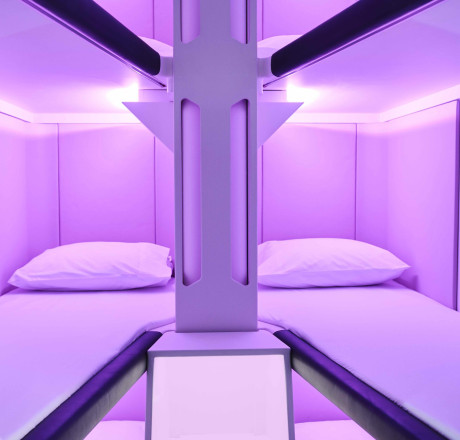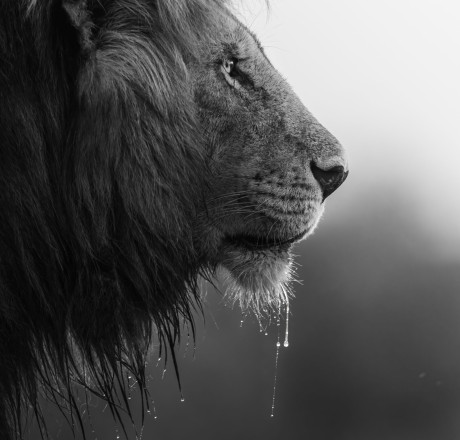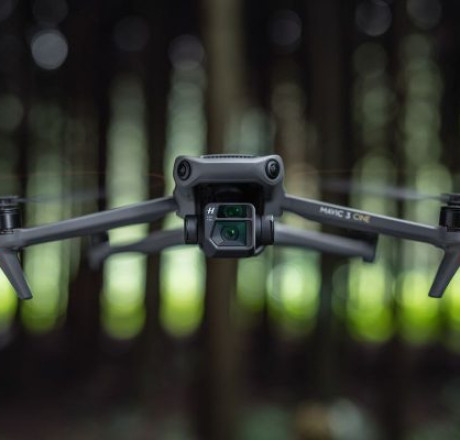World
World
16 Off the Grid Trips You Must Try
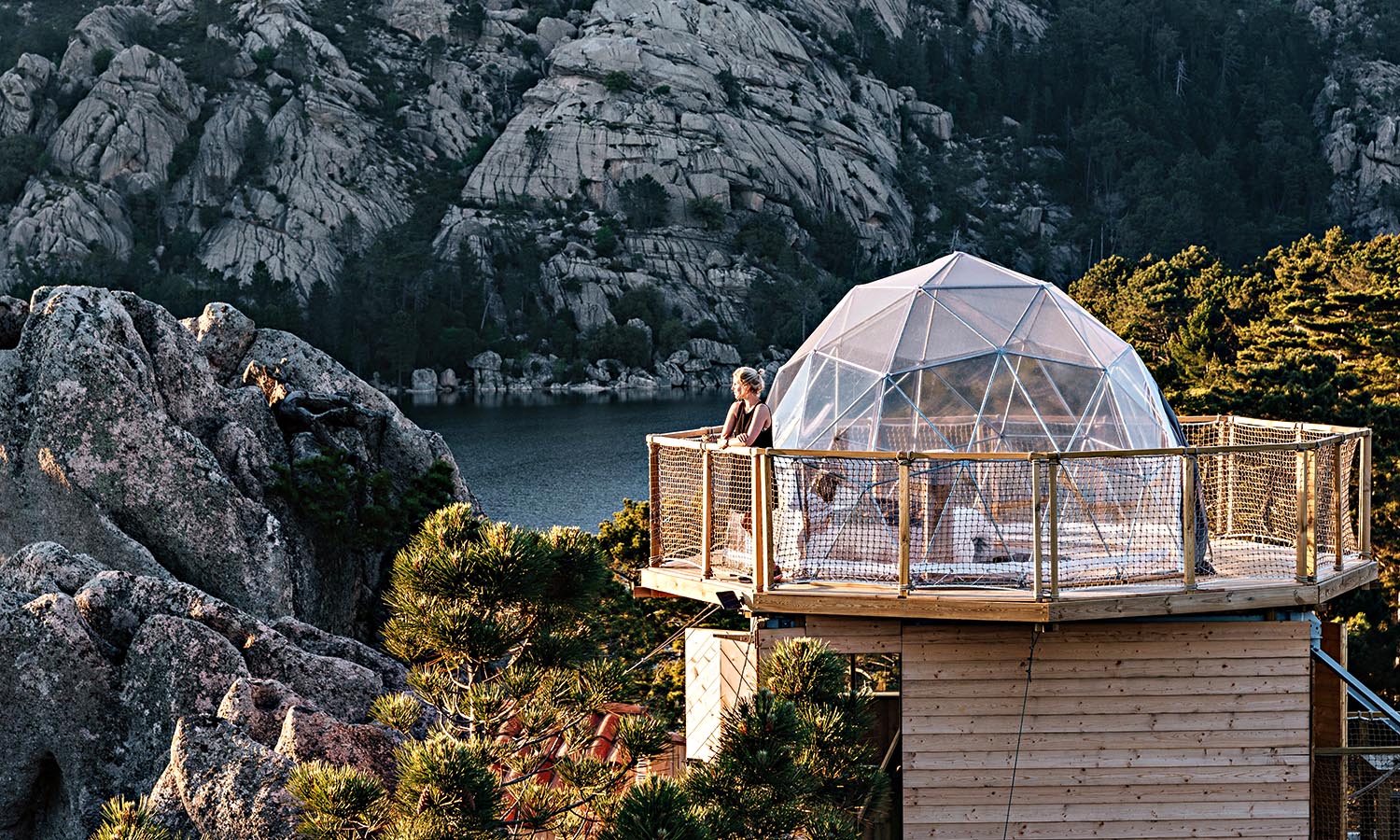

Head for higher ground
If you've hiked through Corsica's Ospedale Forest you may have spotted an odd sight on the cliffs. Suspended on the side of the ridge are three cocoon-like structures and a giant snow globe.
Or at least that's what it looks like from a distance. Get closer and you'll discover those hanging bubbles and translucent dome are designed to house humans. This is Cocoon Village. No electricity and no running water means these unique accommodations aren't considered extravagant, although a solar shower and lights are appreciated additions. Although who needs light when you've got the moon and stars to illuminate your stay?
The cocoons are accessed by navigating a swinging wooden plank, and they dangle more than 10 metres above the forest floor, so this isn't a great option if you suffer from acrophobia. Once you make it inside, a basic yet comfortable set-up awaits. There's a double bed, linen and towels, which is all you need really, considering you'll likely spend most of your time gawking at the view of the Gulf of Porto-Vecchio and Sardinia in the distance.
When you're done with the vistas, hike the trails through lush Ospedale. Or you can simply embrace your aerial sanctuary and settle in on your private terrace. It's the ideal spot to knock back a bottle of Corsican wine and bask in the peace and quiet that comes with being so far removed from the modern world.
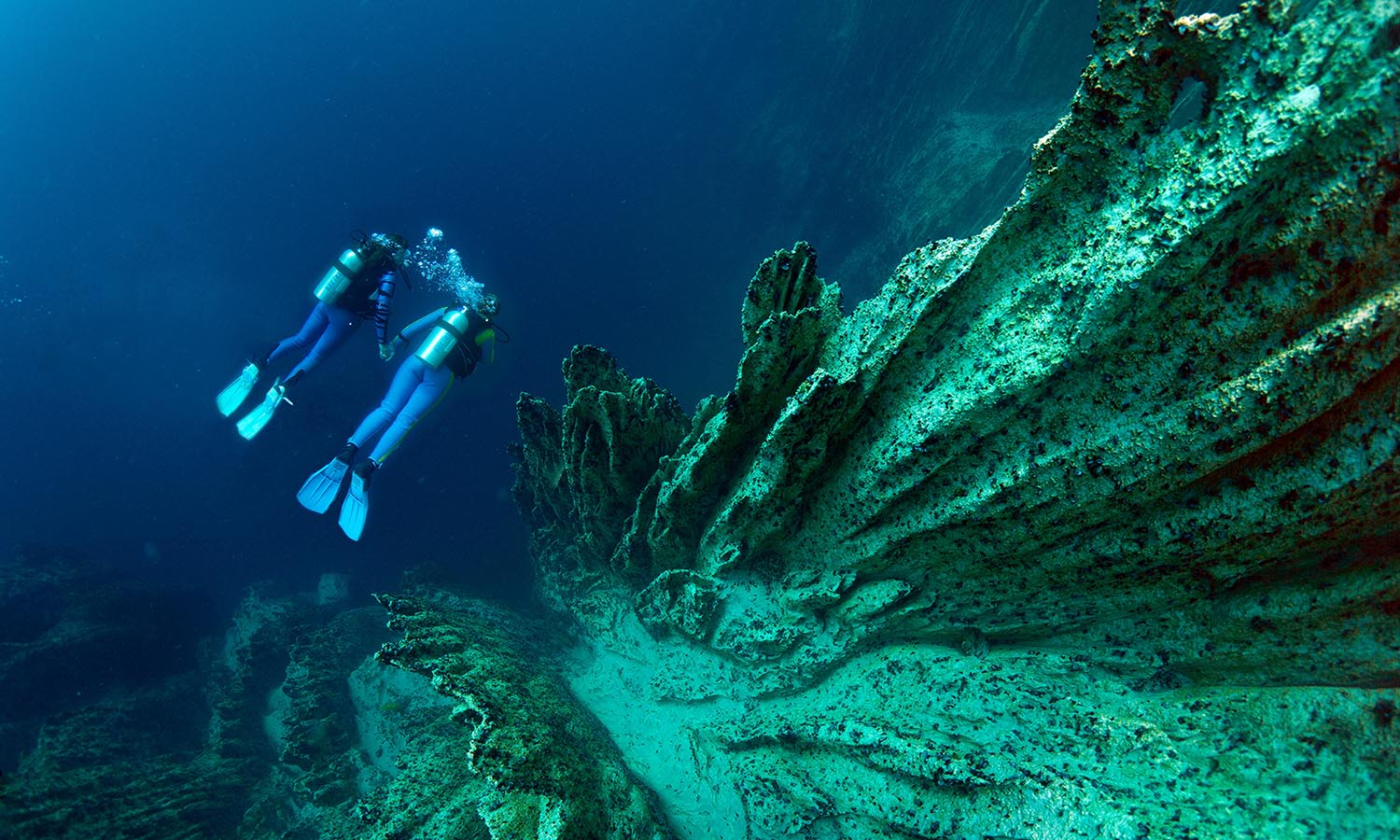

You could be forgiven for equating scuba diving in the Philippines with endless tropical fish and perhaps a whale shark or two. When you strap on a tank to explore Coron's Barracuda Lake, however, you are plunging into very different surroundings. The lake was formed by a sinkhole and, both above and below the surface, the limestone cliffs are stunning. But for divers, the unique aspect of this particular lake is invisible; because it has layered fresh and saltwater (an underground river links it to the ocean) it’s subject to thermoclines and haloclines. The top freshwater layer is about 28ºC, but that changes at about 14 metres when the temperature rises to about 39ºC and the water becomes saline. So stark is the difference between the two types of water you can actually see where it changes (that’s the halocline). At the bottom, about 35 metres down, there’s deep silky silt into which, should you be an advanced diver and feel the need, you can plunge. There’s also the opening to a cave where the resident barracuda the lake is named for is said to lurk. Most of the dive operations in the area will offer a dip into Barracuda Lake as part of a package that also includes trips to World War II wrecks off the coast.
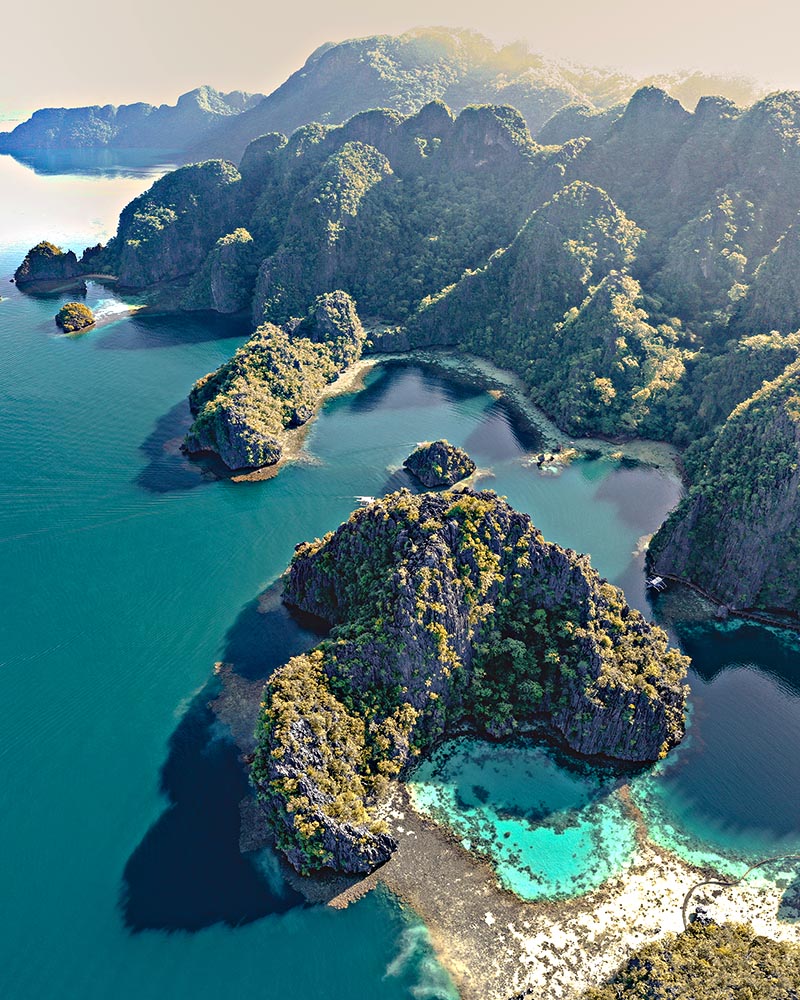

If you’re not a diver though, find yourself a guide with a boat to take you to this stunning location. You’ll definitely want to spend some time swimming and snorkelling in the crystal clear water and marvelling at the underwater cliffs and karst formations. The boardwalk and swimming area does become crowded mid-morning, so either organise to head out really early or go after lunch when most of the tour groups have moved on.
If you want to get away from all that, consider a three-night trip with Big Dream Boatman (bigdreamboatmancoron.com). Krish and Oli started the company to create socially responsible trips that give back to local communities. There’s no real itinerary, but know that you’ll get to see the best of the Calamian Islands, including Barracuda Lake, while sailing on a traditional banka boat during the day. At night, you come ashore and stay in either simple huts or tents by the ocean.
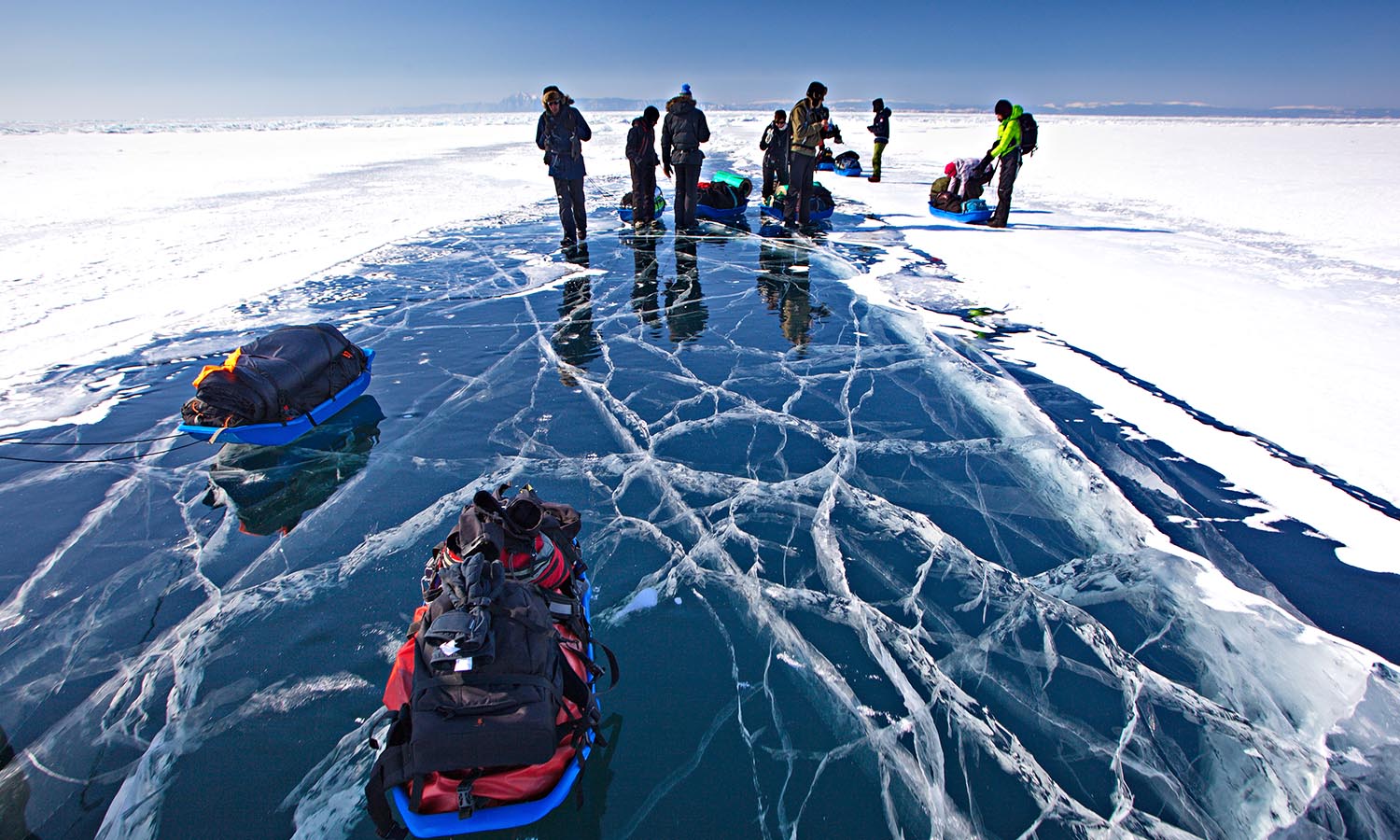

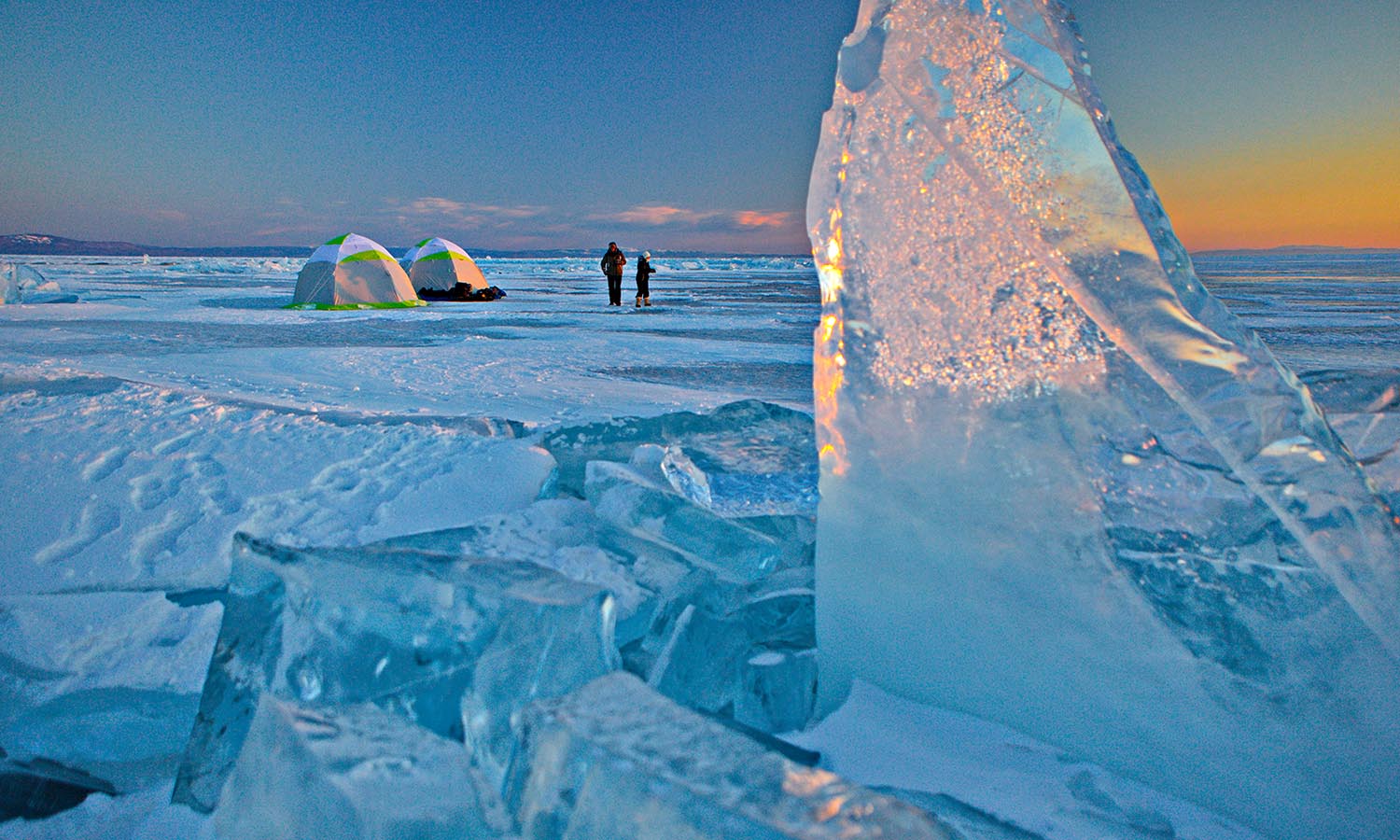

Chances are none of your adventurous mates will have done this. Lake Baikal, north of the Mongolian border, is a long way from just about everywhere. In winter it freezes over completely, and that’s when you can explore it to your heart’s content. BaikalNature (baikalnature.com) offers a guided seven-day Grand Crossing of Lake Baikal exploring this huge expanse that stretches almost 80 kilometres from east bank to west at its widest point. The tour explores towns in the region and the spectacular wilderness of this part of the world, but the part most participants become excited about is time spent on the ice. You’ll drag your own personal sled for the seven-hour trek to the camp in the geographic centre of the lake before making that your home for a couple of nights. Day four is free and most people elect to get up early to take photos then spend the rest of the day playing ice hockey, ice skating, getting into the bania (bath) cut into the ice or relaxing at the Ice Bar with a measure of Russia’s finest. While out in the middle of the lake, where the water beneath the frozen layer is 1,500 metres deep, you’ll stay in heated tents to keep the chill – the tours run in February and March when temperatures hover well below freezing – at bay. That vodka helps, too.
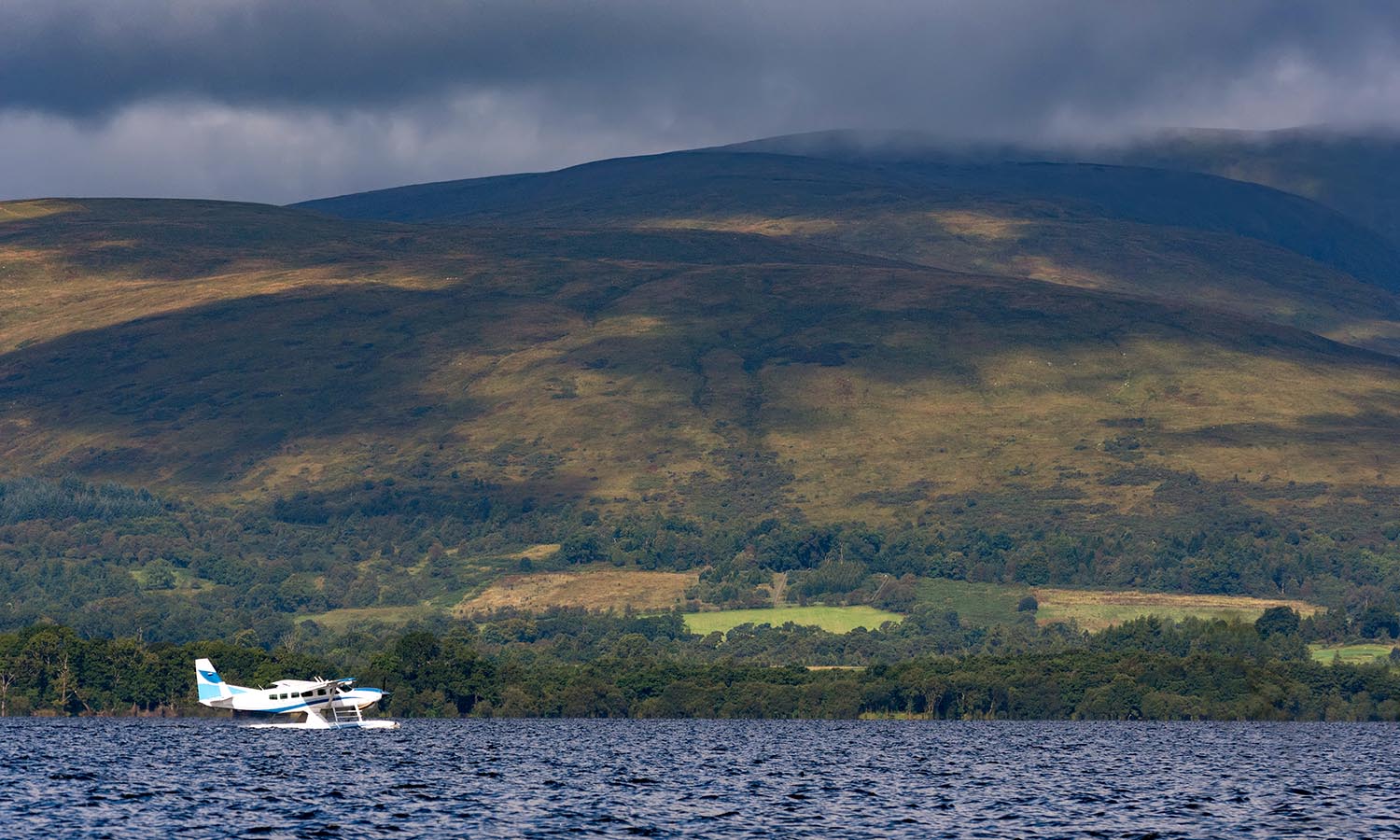

Look, no one loves exploring a watery destination by canoe or with a snorkel
more than us, but when it comes to the vast expanse of Loch Lomond, the largest inland stretch of water in Britain, it’s best to get up high. All the better for seeing some of the 30 small islands that dot its surface. Some do it the hard way by hiking up Ben Lomond armed with binoculars. On a clear day, though, why not take a flight in a Cessna 208 Caravan. The flying machines of Loch Lomond Seaplanes (lochlomondseaplanes.com) take off from Cameron House Hotel near Balloch in southern Scotland before flying at a height of between 500 and 3,000 feet over a number of lochs – Long, Fyne and Striven, as well as Lomond – tiny villages, Rothesay Castle, the highlands and quite a few islands. You’ll finally splash down 30 minutes later back where you started.
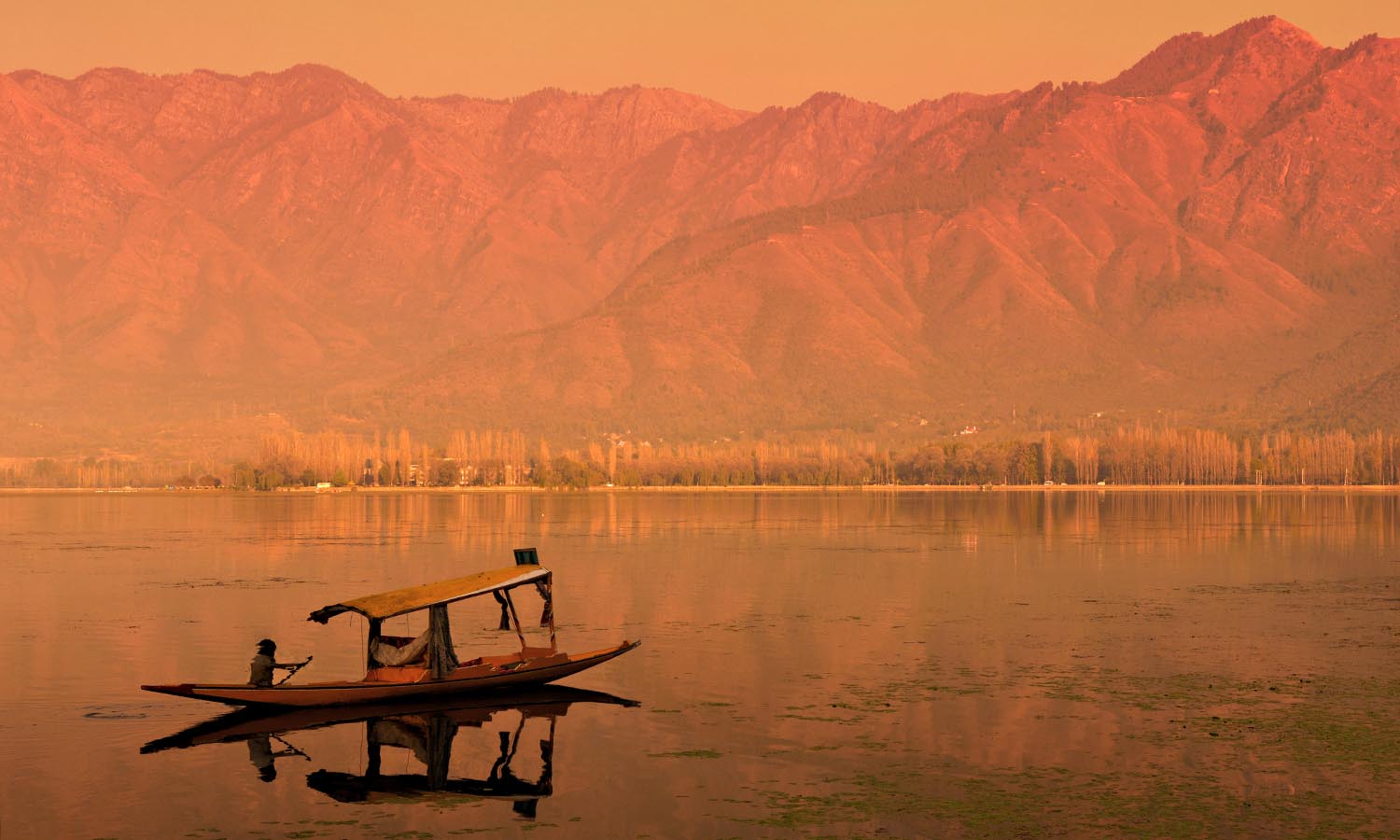

Forgive us for the folly, but this could be one of the most romantic places on Earth. Set near Srinagar, one of the world’s oldest tourist destinations and the summer capital of Jammu and Kashmir, Dal Lake is flanked by the snow-capped Pir Panjal mountain range and its shores are lined with lavishly carved and decorated houseboats serviced by flower-strewn, gondola-like boats called shikaras. Kashmir was one of the few parts of the country where English colonisers couldn’t buy land, so to get around the rules and escape the summer heat they built flotillas of floating holiday homes that remain tethered to the shoreline. In 1966, Ravi Shankar brought George Harrison to one of the houseboats where he taught the Beatle how to play the sitar. The boats all but rotted away in later decades, but the area saw something of a renaissance early this century and many of them, along with the extravagant lakeside hotels, were restored.
Now, visitors take a room on a houseboat – many are a riot of colour and textures, although the standards do vary dramatically – as their base and, like George and Ravi, spend their days taking languid rides on shikaras to floating markets, islands and Srinagar. In the city, visit carpet makers and wood carvers in workshops, stroll around exquisite Mughal gardens and sip namkeen chai, made using local green tea, almonds, pistachios, cardamom, salt and baking soda, which gives it a pink colour.
Of course, there’d be some who would tell you that Kashmir, something of a flashpoint for hostilities between India and Pakistan, is not the safest of holiday destinations (including our very own DFAT). Local tourists are heading back there in numbers though, so if you fancy visiting check the situation on the reg and don’t do anything stupid.
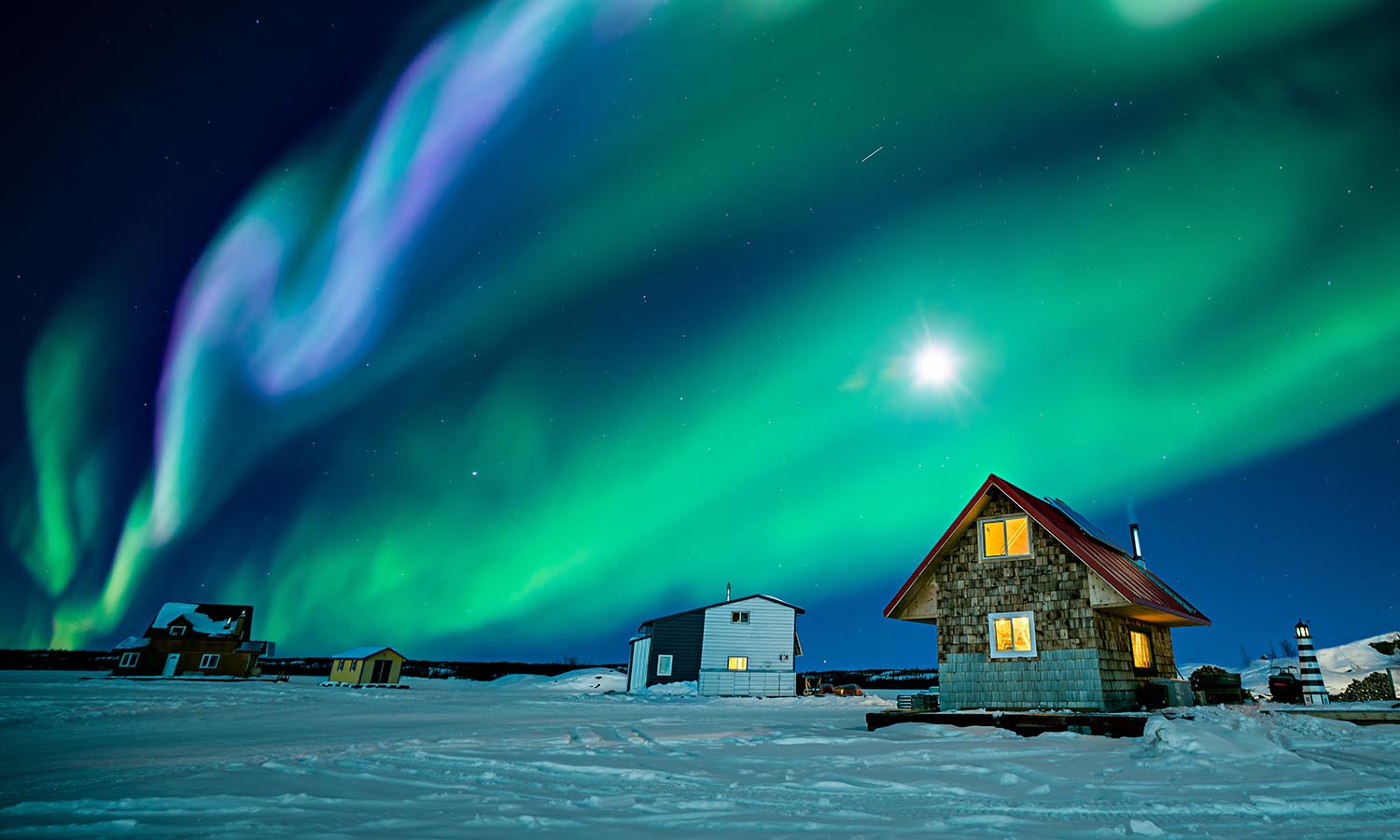

It’s the deepest lake in North America and you better believe there are plenty of fish swimming below the surface. In fact, the human population in the Northwest Territories is so sparse, species like arctic grayling, northern pike and lake trout thrive in Great Slave Lake. Flying to Yellowknife (population 20,000) to test your luck with rod and reel is popular during the summer, but why not go when the temperatures drop? In winter, the lake freezes over forming a good, thick layer of ice and turning houseboats to cabins. This is the time to try your hand at cutting a hole in the crust and dropping in a line. Some people choose to dangle outside; others fish from inside a heated tent or cabin. There are a number of operators like Great Slave Lake Tours (nwtfishingtours.com), which operates across the lake from Yellowknife at Hay River, that can organise day trips or overnight ice-fishing excursions. The other option is to book a stay in one of those houseboat/cabins (search Yellowknife houseboat rental). Do that and chances are high that while you’re cooking up your catch the aurora borealis will light up the sky above.
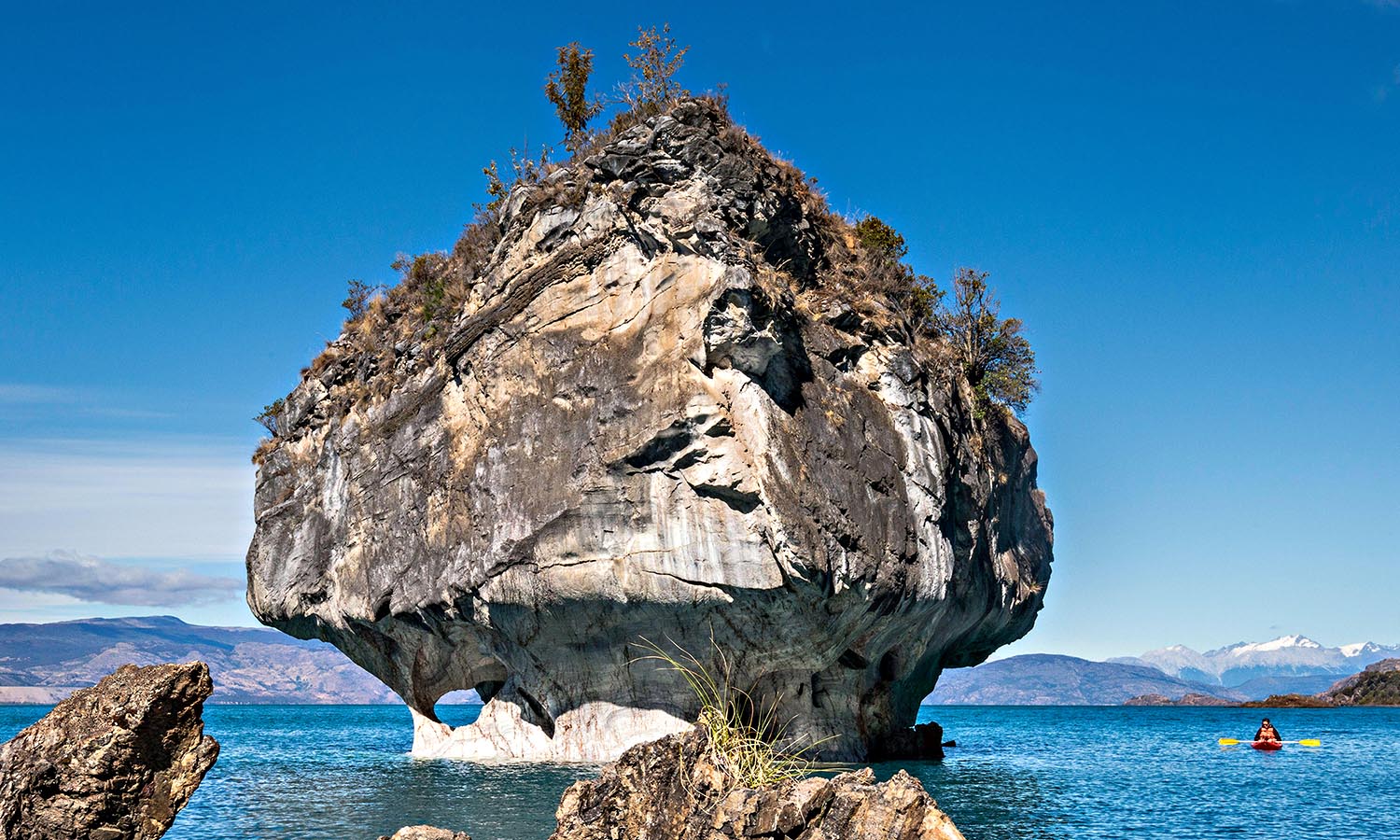

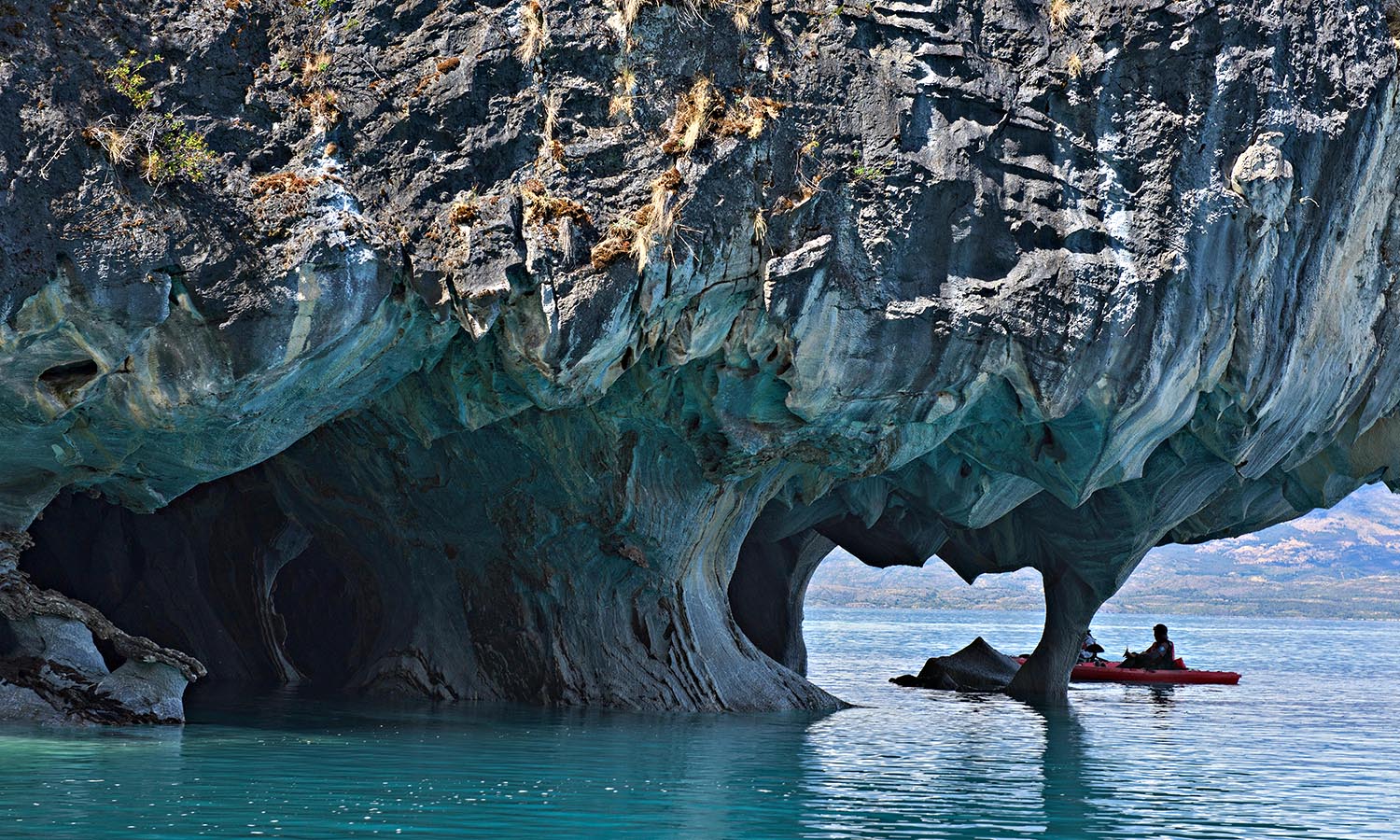

Take the country’s largest glacial lake then add some majestic caves in all shades of blue and you’ve got a sure-fire drawcard for travellers. Except that Chile’s Marble Caves are accessible only by boat or kayak on Patagonia’s Lago Gral Carrera (General Carrera Lake), and you’ll already have been on quite the adventure when you arrive at Puerto Rio Tranquilo to get out on the water. Tranquilo is a four-hour, bone-jarring drive from Balmaceda, which is a two-hour-and-15-minute flight from Santiago.
There are half-hour trips in local fishing boats from the port but it’s far more fun if you hire a guide and kayak there. Glide into the grottos and caverns formed by 6,000 years of punishment by waves, and marvel at the smooth walls in all shades of shimmering blue. Conditions are best between spring, when the water is shallow and takes on turquoise tones, and summer when melt from glaciers sends the hue to azure. Go early in the day when the sun is out for the best photos – the lake should be calmer, which will allow you to both see the patterned marble beneath the surface of the water and the reflections of the caves’ intricate patterns on it.
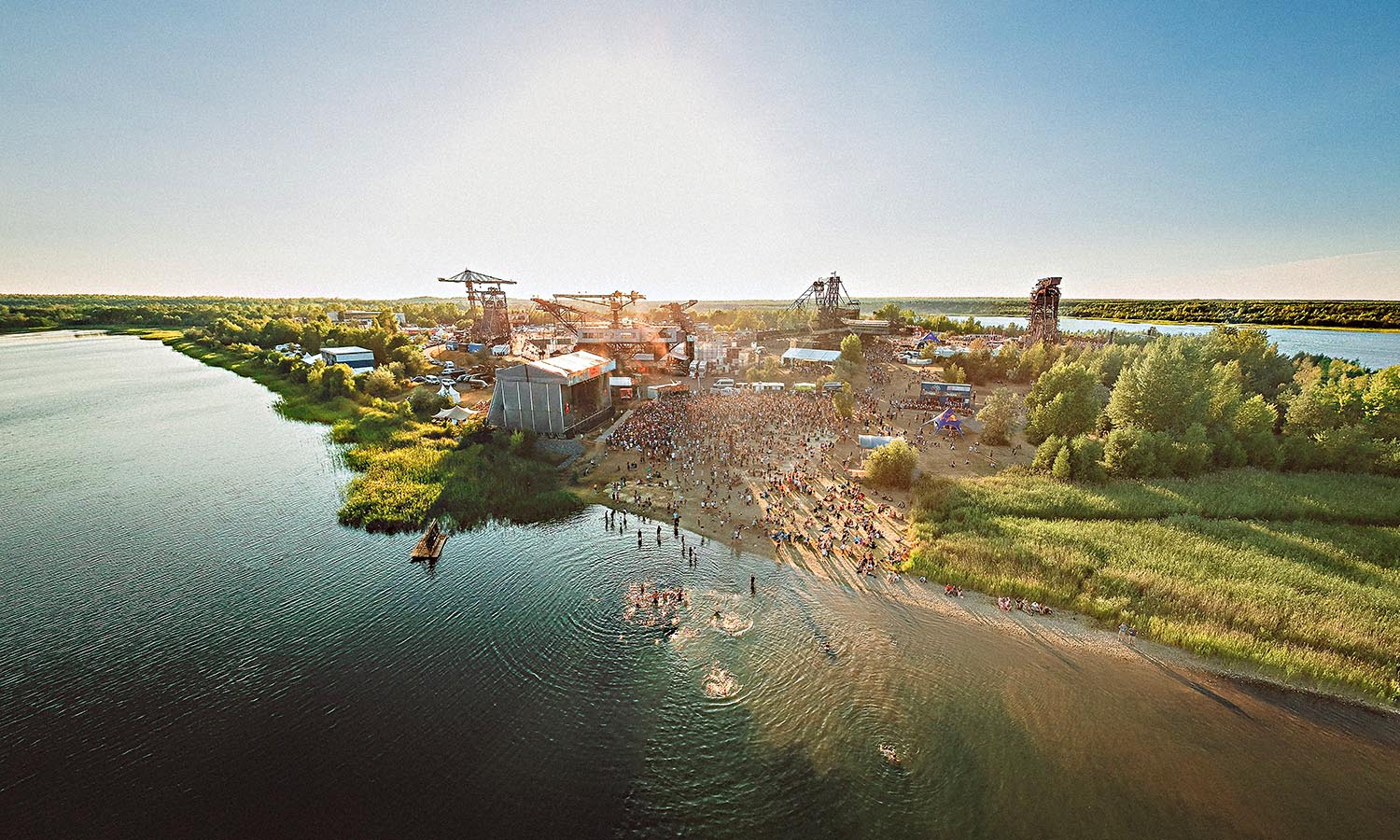

In the iron ‘city’ of Ferropolis in Gräfenhainichen, one group of music lovers has turned a deserted industrial landscape almost completely surrounded by Lake Gremmin into the backdrop for the Melt! Festival (meltfestival.de). The annual event, usually held in June, features some of the biggest dance and pop acts in the world, as well as 24-hour dance floors, light performances and fireworks exploding from the huge pieces of machinery that still dominate the site despite having been abandoned in the mid-twentieth century. It’s mid-summer too, so the manmade beach is a popular spot for rejuvenating dips between mammoth dance sessions.
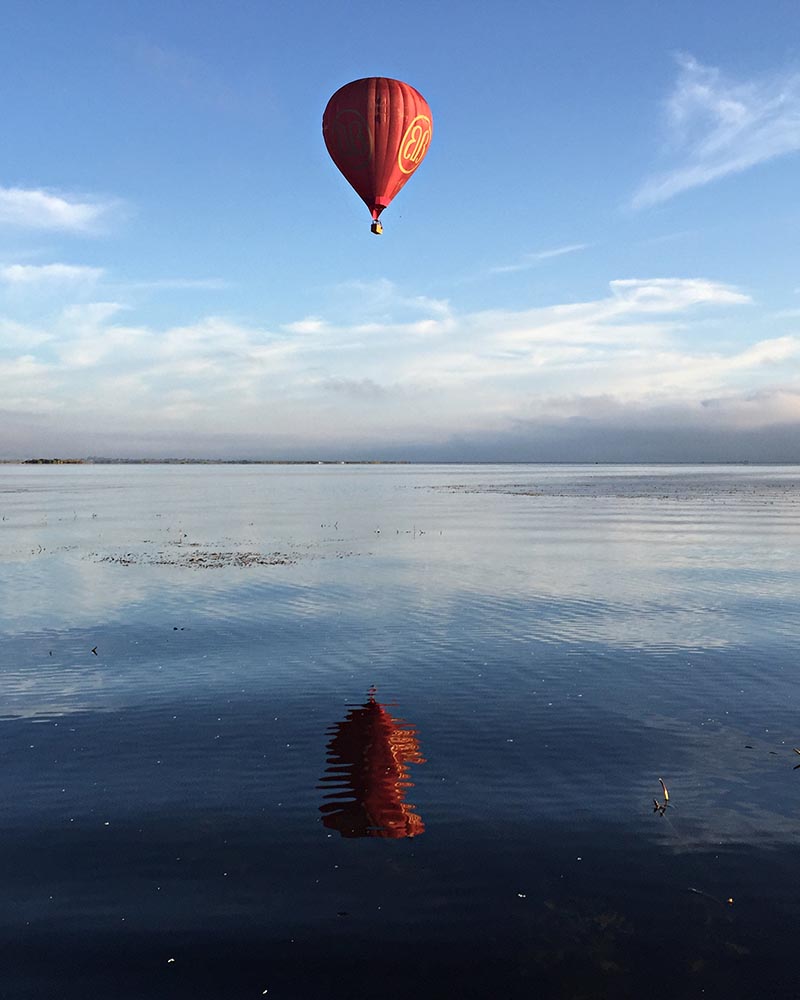

When it comes to the country formerly known as Burma, there’s one destination on every traveller’s list: Inle Lake in the Shan Hills. Cruising across its expanse, the most common way to explore, takes you past houses on stilts, gardens that float and Intha fishermen who use a leg to row their boat while using both hands to drag in their catch. It’s all pretty magical, but add another layer of excitement to the journey by jumping into a basket. Balloons over Inle (balloonsoverbagan.com) offers early-morning flights that soar across the expanse of water and life on the lake. The pilots will dip down and fly low over golden stupas near the water’s edge and locals rowing their wares to market. Of course, every day’s flight is different, thanks to the wind and weather conditions, but expect to be in the air for between 60 and 90 minutes. You’ll be enjoying a glass of champagne and breakfast by about 8.30am, leaving the rest of the day to explore at ground level.


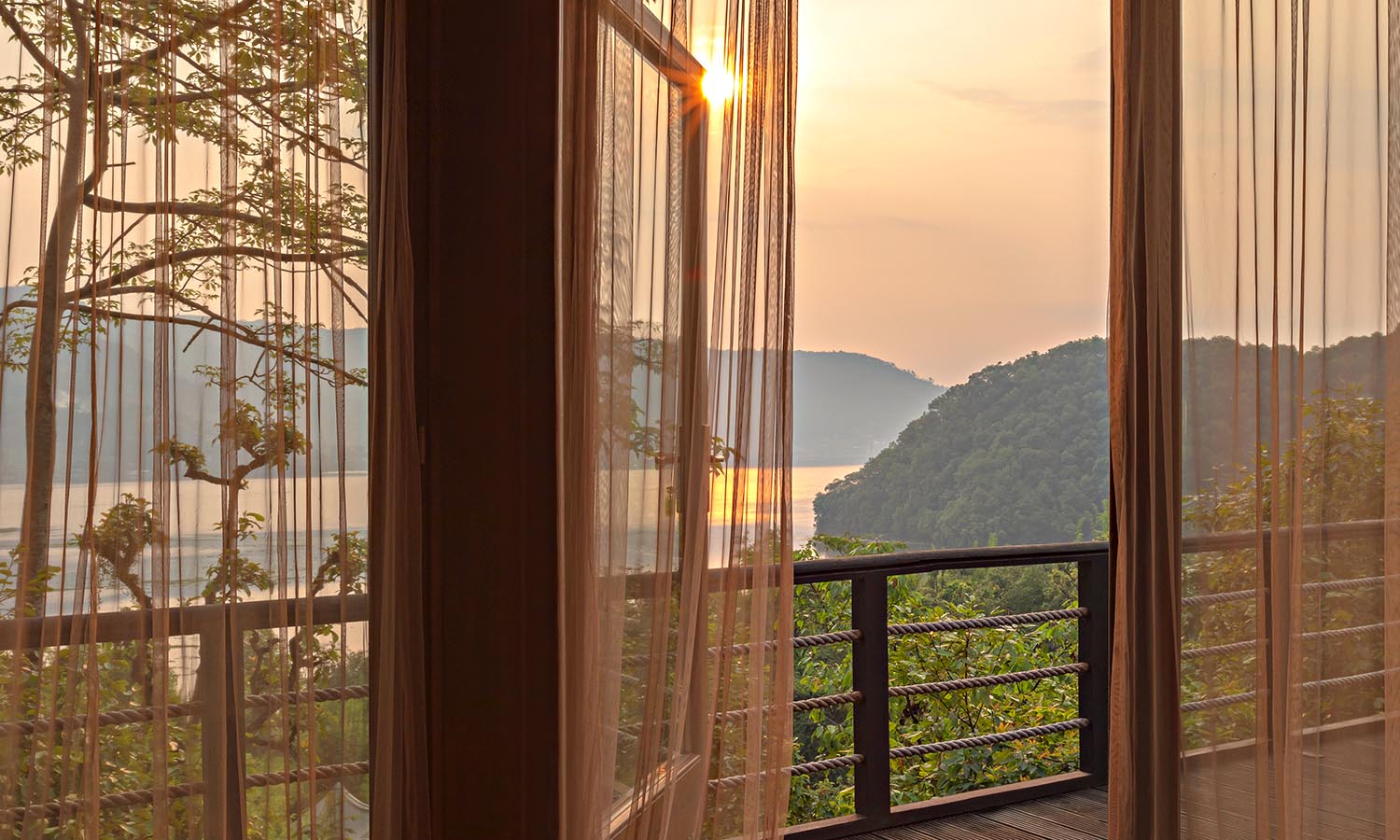

Sometimes you just want to look at the view, and the Pavilions Himalayas Lakeview (pavilionshotels.com) is just the luxurious spot to do it. Just eight tented villas sit above Phewa Lake, itself surrounded by rice paddies and the Annapurna Mountains. They’re generously spaced, so feel completely private, and deliver all the little luxuries you’d expect from a fine hotel – outdoor rain showers, handcrafted furniture, massages and afternoon tea, diaphanous curtains wafting in the gentle breeze. It’s part of the larger Pavilions Himalayas, so glamping guests can take advantage of the many activities on offer, from gentle bike rides along the shore of the lake to full-day hikes to the Peace Pagoda with its spectacular views of the Annapurnas and Pokhara. On your way back down, see if you can catch the reflection of Mount Machhapuchhre in the surface of Phewa Lake.
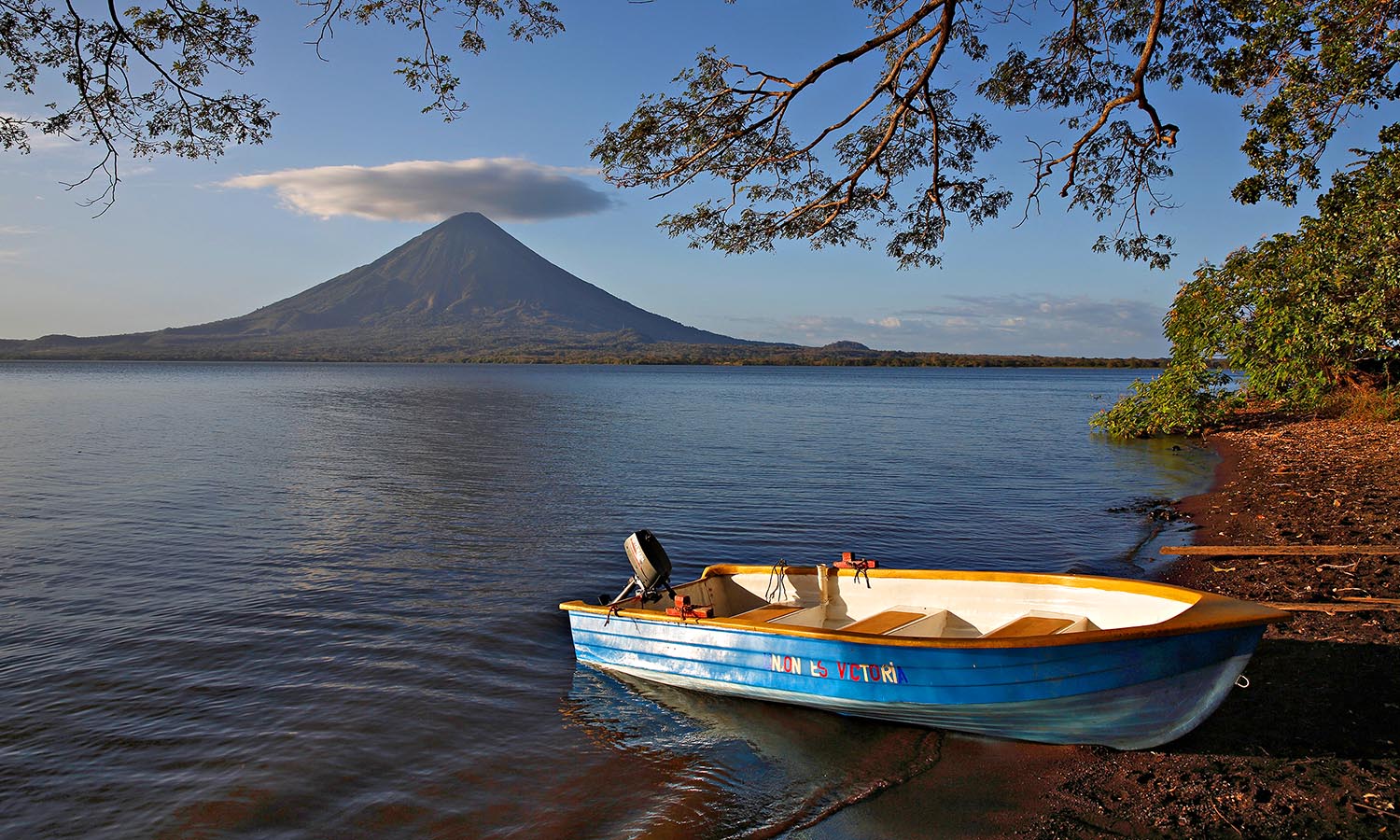

There’s plenty for a visitor to find fascinating on Lake Nicaragua. Apart from it being the largest freshwater lake in Central America and having an island at its heart with not one but two volcanoes (Ometepe is home to Concepción and Maderas, with the former last erupting in 2010), this is an absolute winner for nature buffs. Head to Los Guatuzos, a reserve on the lake’s southern shore, where there are huge populations of water birds, like the roseate spoonbill and a number of different types of kingfisher. Just southwest of the lake is Mombacho Cloud Forest Reserve, where you can follow trails to see howler monkeys, quetzals (beautiful emerald birds with red breasts) and smaller endemic creatures like the Mombacho butterfly and Mombacho salamander.
It’s the lake’s past life though that makes its present inhabitants so interesting. It was once thought to be an ocean bay until a volcanic eruption shut it off from the sea, trapping all sorts of oceanic creatures in there that slowly adapted to their new freshwater home. In its depths there are marine species like sawfish, tarpon and, perhaps most surprisingly, bull sharks. (In more recent times, scientists think the sharks got in the lake by making their way down the San Juan River, which flows from the Caribbean Sea.) The locals call the sharks tigrones, but heavy fishing has seen their numbers drop and attacks on swimmers are rare.


A visit to Lake Titicaca is high – forgive the pun – on many people’s wish lists. Not only is this the largest lake in South America, but it’s also at 3,800 metres above sea level and surrounded by an amazing landscape of mountains and villages. Some of those villages have been built on the water. The Uros Islands – there are about 70 in all and each one is inhabited by between one and 10 families – have been handcrafted from totora reeds by the Uros people whose ancestors pre-date the Incan civilisation. But it’s not just the islands that have been hewn from reeds collected near the shore. The Uros build houses, fences, water tanks and boats from them as well.
Most people visit the Uros Islands on a day trip from Puno, but if you really want to immerse yourself in the ancient culture of the people – much about their way of life has remained relatively unchanged for almost 4,000 years – book a homestay. You’ll reside with a family and might end up going fishing, visiting their friends on other islands, learning how to knit the reeds or simply chatting about your respective lives, especially if your Spanish is good. The vast majority of people who live on the islands make their living from tourism, so you’ll be well looked after. Check out Airbnb to find a family offering rooms, often for as little as AU$50 a night. From the moment you hear the distinctive cracking as you step on to the island to waking up with the dawn and watching the sun rise over this vast, deep blue tract of water, this is one experience you’ll find hard to forget.
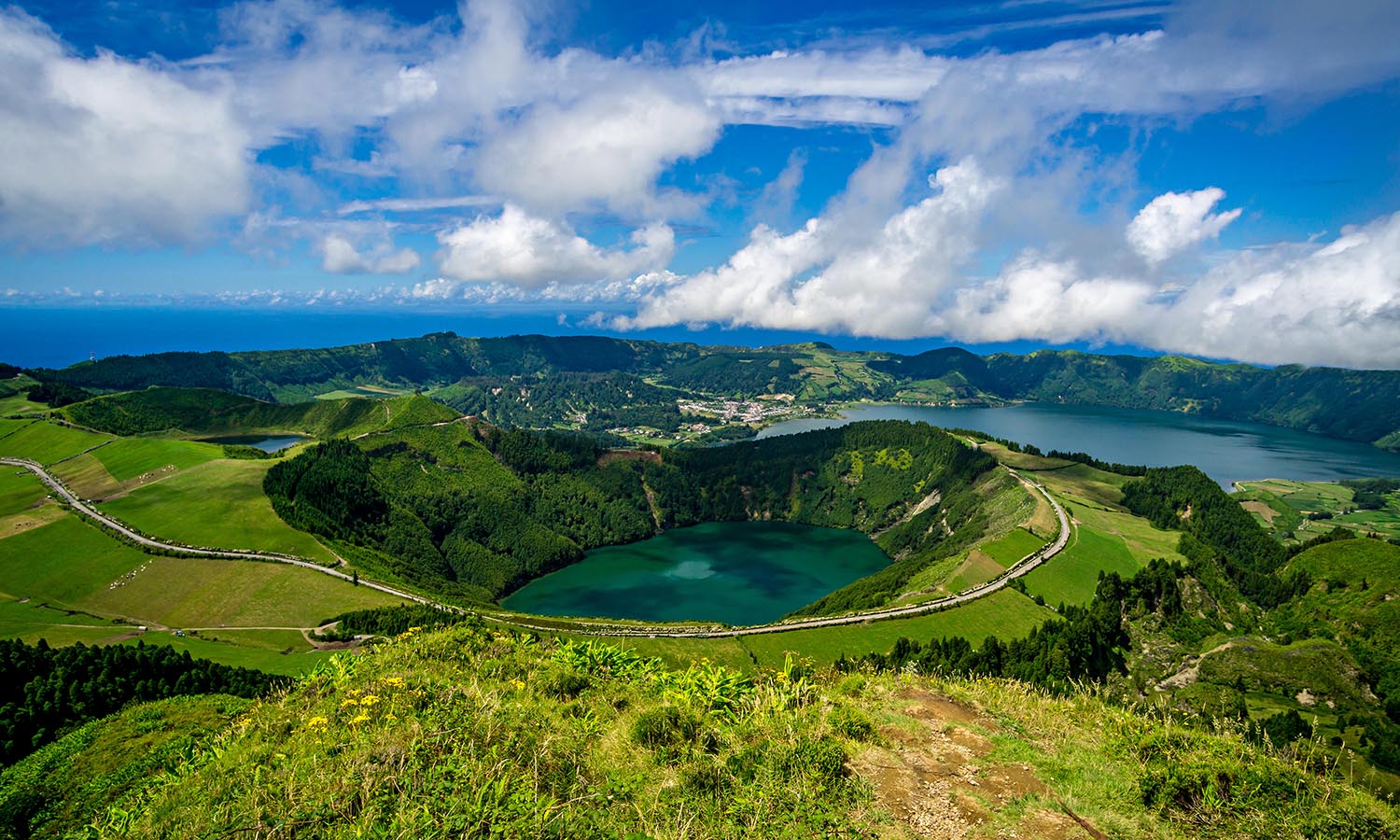

In fact, you could almost call Lagoa das Sete Cidades (Seven Cities Lagoon) and Lake Santiago, on the Azores island of São Miguel, a triple treat. Why? The former body of water is actually two smaller lakes set in a volcanic crater and connected by a narrow strait. Thanks to different ecology, though, one is coloured blue and the other is green. The best place to witness the distinct shadings is high up another crater’s lip above Lagoa Verde where, remarkably, should you turn and face the opposite direction, you can also see Lake Santiago. There is a great 20-kilometre loop hike that follows the high points right around all three lakes, but you’ll need a good level of fitness and at least six hours to make it all the way around.
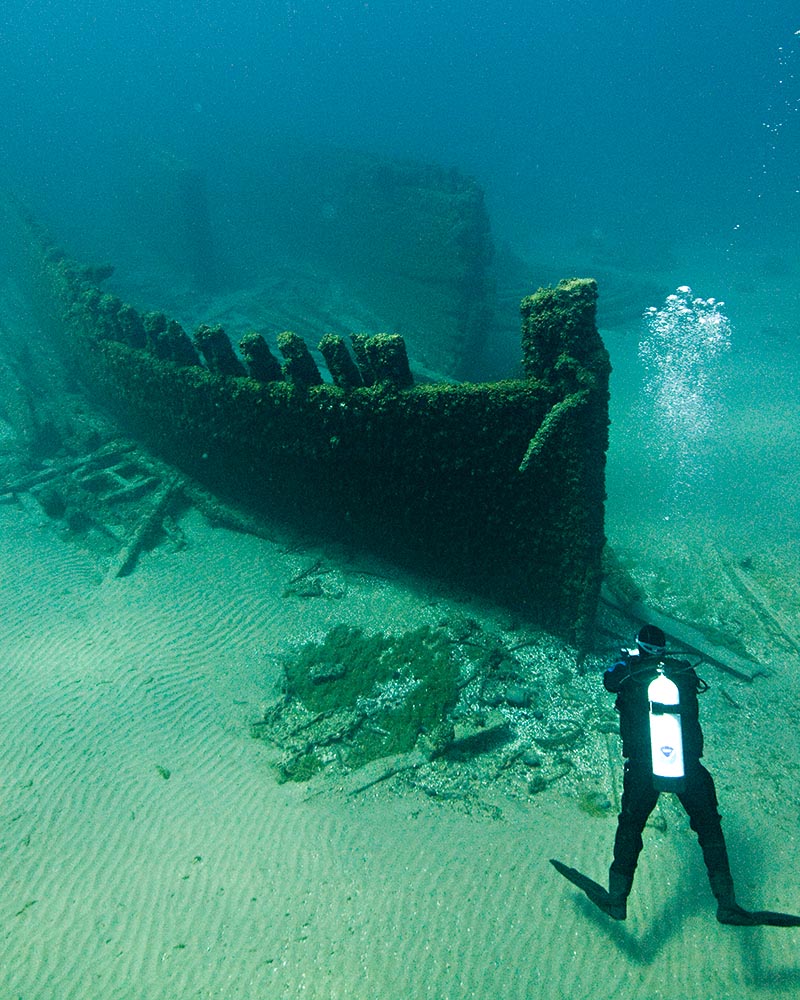

Wreck divers usually head to oceans wild or once wracked by war to explore ships and planes that have settled on the bottom and become ecosystems for marine life. But in the northern states of the USA, where the Great Lakes and connected locks and rivers create a waterway that stretches from Minnesota to the Atlantic Ocean, plenty of ships have come to grief since the 1800s hauling ores, wheat and cement . In fact, the lakes are home to more than 6,000 shipwrecks, although there are surprisingly few divers aware of the treasures not far off shore and close to some large towns and cities. Do a search for Great Lakes dive shops and whichever one is closest to your destination will be able to help you out. We like the idea of heading to Lake Huron. It’s the second largest of the Great Lakes and lies across Michigan and Ontario. In its depth are more than a thousand wrecked ships, including 116 historically significant ones in the Thunder Bay National Marine Sanctuary and Underwater Preserve. Among them is the Lucinda Van Valkenburg, a wooden three-mast schooner that sank in 1887 when it was hit by the Lehigh while en route to Chicago loaded with coal. She now lies at a depth of about 20 metres.
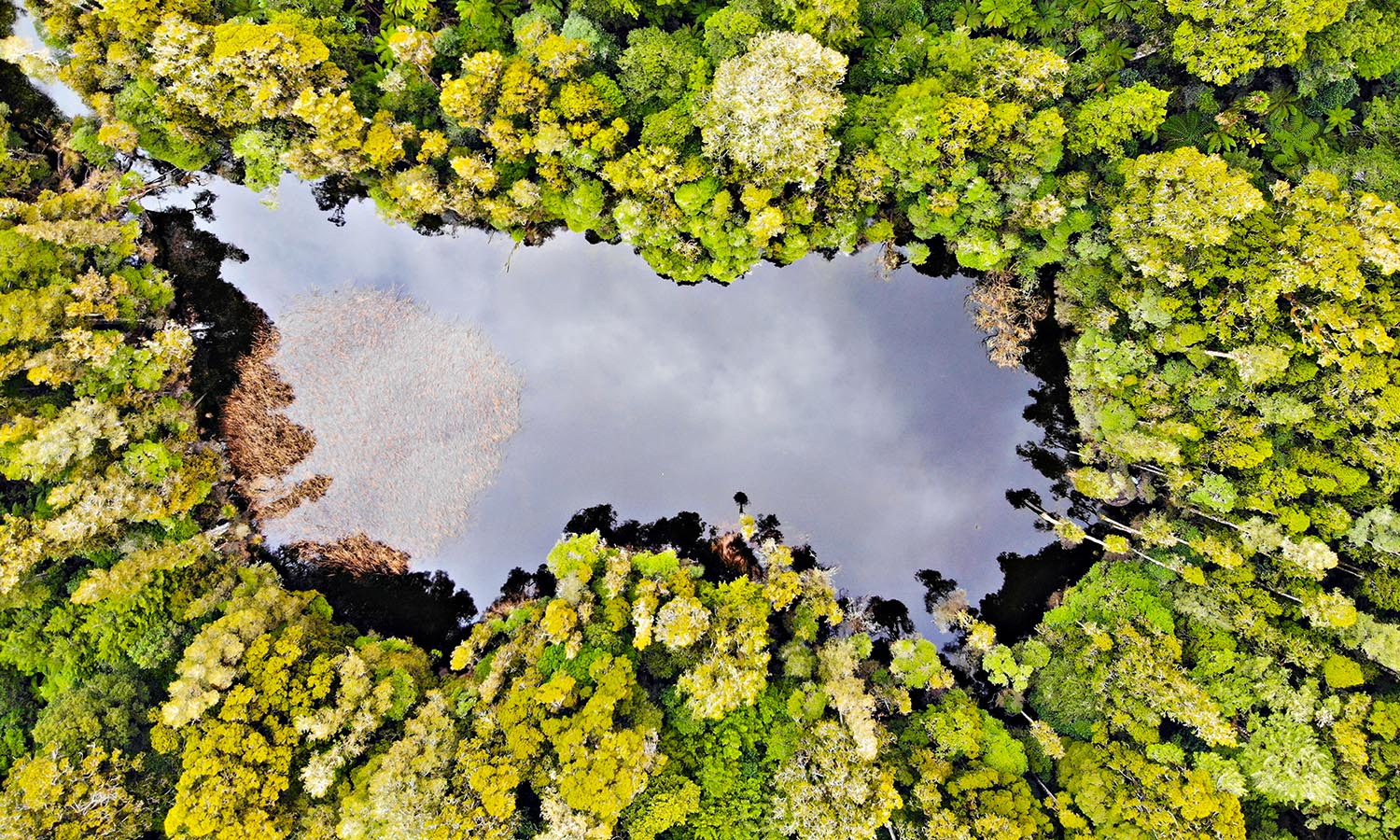

Just west of the deep waters of Lake Taupo is the ancient Pureora Forest Park. Its densely packed trees create an emerald ecosystem that is home to some of New Zealand’s most rare and beautiful creatures, including kaka (parrots), piwakawaka (fantails) and the rare kōkako (blue-wattle crew). Get Logan Devine of Go Explore NZ to take you on a hike through this pristine swamp forest and you’ll end up at Waihora Lagoon. It’s like a jewel in the park’s crown and, from the boardwalk, you can see the tall rimu and kahikatea trees reflected in its mirror-like surface.
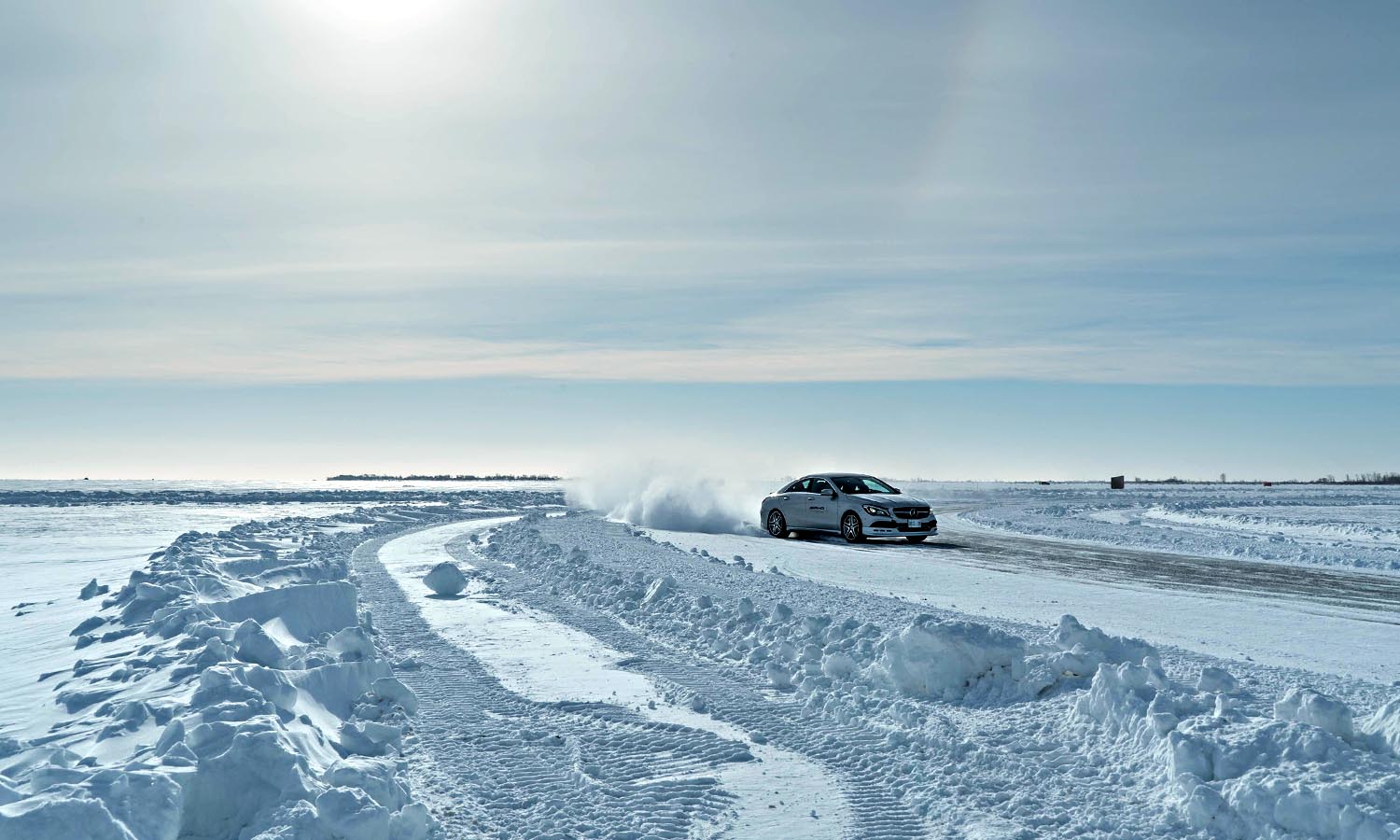

Look, we’re not saying the folks at Mercedes-Benz are touched, but would you let a bunch of randos drive your new vehicles at top speed around an ice track? It happens each winter, when, as part of the AMG Driving Academy (amg-experiences.com), a racetrack is created on frozen Lake Winnipeg near Gimli, Manitoba. Those signing up for the three-day pro course – it costs about AU$6,500 – get individualised coaching in oversteering, drifting and driving in these types of conditions. Which should come in super handy when you’re back in your Suzuki Swift and stuck in a Sydney traffic jam.
Tags: Calamian Islands, canada, chile, Corsica, france, germany, india, myanmar, off the grid escapes, phillipines, portugal, russia, scotland
 (
(







